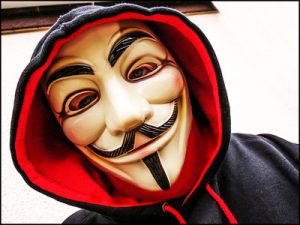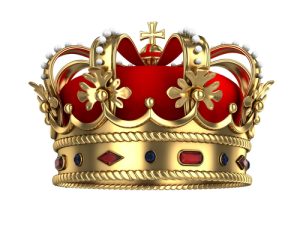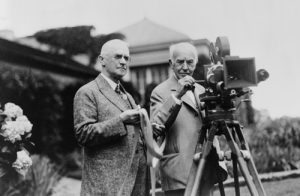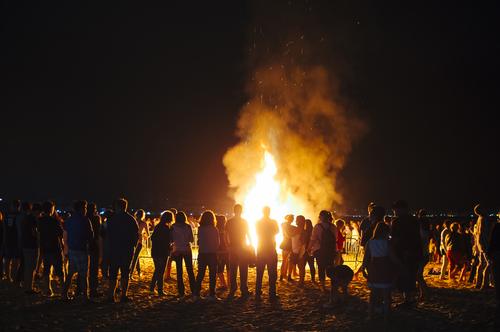
A brief history behind the British celebration of Bonfire Night!
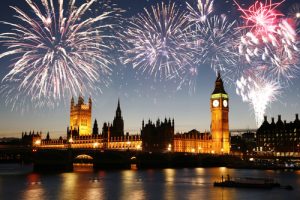
Image credit: Sampajano_Anizza/Shutterstock.com
On 5 November every year, people across the UK and many parts of the Commonwealth light fires, let off fireworks and burn the ‘guy’. But, what is the reason behind the ‘Bonfire Night’ celebration? As you probably know, it is done to commemorate the anniversary of the 1605 Gunpowder Plot. This was a failed attempt by a group of renegades to blow up the Houses of Parliament in London.
In 1603, Protestant James I ascended to the throne of England. His predecessor, Queen Elizabeth I had suppressed Catholicism in England. Many Catholics believed that the new king, being the son of the late Catholic Mary Queen of Scots, would be sympathetic towards their cause. However, as it turned out, James continued to carry out a campaign of religious persecution against Catholics. This obviously upset a sizeable minority of the country’s population.
Robert Catesby, a well-connected, high profile Catholic, decided he needed to do something drastic about the situation. Catesby’s dramatic but simple plan was to kill the king, bring down the establishment, and spark an uprising. With the country in turmoil, a Catholic monarch would then be restored to the English throne.
Catesby’s cousin, Thomas Wintour, was soon recruited to the cause. He in turn was quick to rope in other similar thinking Catholics. The first part of the plan was to blow up the king and government on the opening day of parliament. This was to be done by placing barrels of gunpowder under the House of Lords. However, the daring plan still lacked one essential member of the team…………an explosives expert!
The Emergence of Guy Fawkes
Meanwhile, a likely recruit, Guy Fawkes had just returned to England from Spain. He had been there for many years fighting for the county’s Catholics against the Protestant Dutch reformers. By this time, Guy Fawkes, liked to be known by the continental version of his name, i.e. Guido. Already an associate of Wintour, he quickly introduced Fawkes to Catesby.
The conspirator’s plan was soon put in motion. Under the cover of darkness, they managed to smuggle 36 barrels of gunpowder into a vault underneath the House of Lords. On the night of November 4, Fawkes was tasked with guarding the powder keg in the vault. Meanwhile, an anonymous letter had been received by the parliamentarian, William Parker, the 4th Baron Monteagle. A Catholic loyal to the crown, the letter warned him to avoid the state opening of Parliament.
It still remains a mystery to this day who sent the letter. However, many believe it was the conspirator Francis Tresham, who happened to be the brother-in-law of Lord Monteagle. When news of the letter soon reached the king, he immediately ordered an extensive search of the Houses of Parliament. It was just after midnight when Fawkes and the stockpile of gunpowder were discovered.
The Rise of Bonfire Night
The king ordered Fawkes to be tortured at the Tower of London in order that he reveal the names of his co-conspirators. A confession was eventually extracted from him but by this time most of his accomplices had already been arrested. Catesby and four others died at the hands of King’s troops. News of the attempted coup soon spread across the country. Many communities began lighting bonfires to celebrate the fact the plot had failed, and the King was alive.
A nominal trial was carried out in January 1606. Fawkes and the remaining conspirators were found guilty of treason and sentenced to death. They were all publicly hung, drawn and quartered, except for Fawkes. He managed to avoid the humility of public execution by leaping from the gallows but subsequently broke his neck.
In 1606, the Observance of 5th November Act was passed. This implemented an annual public day for celebrating the plot’s failure, which became known as Gunpowder Treason Day. By the early 19th century, children had taken to making an effigy of ‘Guy Fawkes’ prior to Bonfire Night. They would then parade the dummy around the streets in a homemade trolley asking ”a penny for the Guy”, as a means of begging. In later years, children would generally spend the proceeds of their endeavour on fireworks. In Britain, at the time, it was the only occasion when fireworks would normally be seen. The climax of the night was when the ‘Guy’ was thrown onto the bonfire for burning.
The Decline of the Celebration
Up until the 1980s, it was still common practice for people across the country to start building bonfires several weeks prior to the much-anticipated 5th of November. Literally, tens of thousands of bonfires were made in private gardens, on waste ground, and on common land, etc. in readiness for the big event. However, in more recent times, mostly due to health and safety concerns, the bonfire experience has become a much more regulated event. In fact, the event now usually falls under the control of the local authority. Now it is almost always held on the nearest weekend to 5th November, which has somewhat undermined the relevance of the event.
Alas, the once familiar children’s rhyme, of;
‘Remember, remember, the fifth of November,
Gunpowder treason and plot;
I see no reason why gunpowder treason
Should ever be forgot.
……….is rarely heard anymore on the streets of Britain. The whimsical rhythm was sung by almost all children during their ’rounds’ with the Guy. However, it now looks as though it is consigned to the bin of history, as the custom is now no longer practised. Private bonfires are now almost non-existent as the significance of the ‘Bonfire Night’ tradition has gradually been eroded. This is partly due to the fact the celebration of Halloween, occurring only a few days earlier (31 October) has grown significantly in recent years. Thanks to the power of marketing, the growing global event of Halloween, now far outshines the somewhat quaint custom of Bonfire Night.
Header image credit: Lemon Tree Images/Shutterstock.com
If you’ve enjoyed reading this post, why not check out more of the articles in the series by clicking the following link: Why do we…….?
Or why not try our Guy Fawkes Quiz
